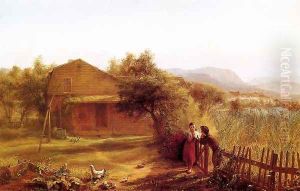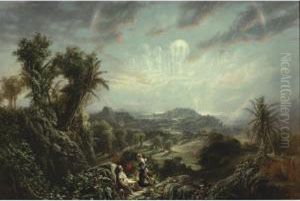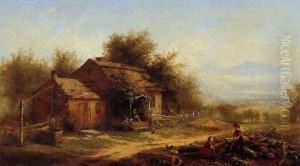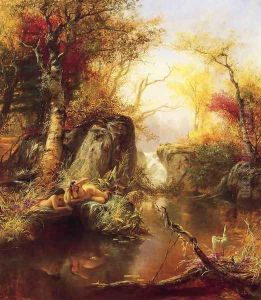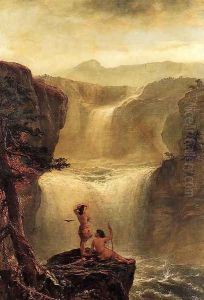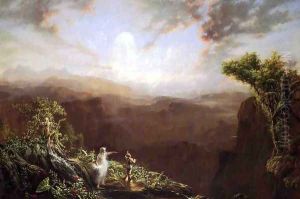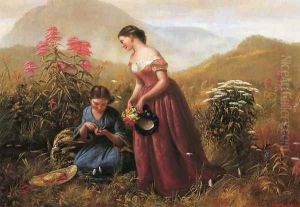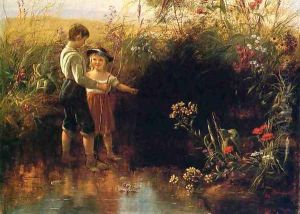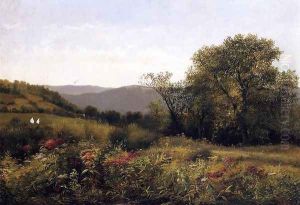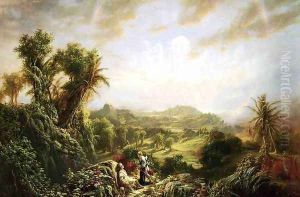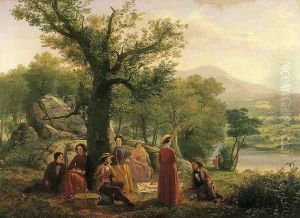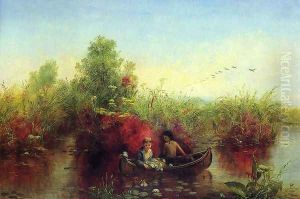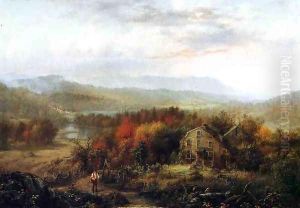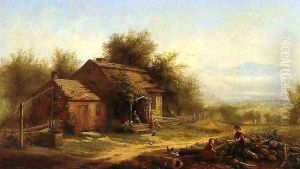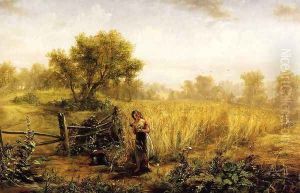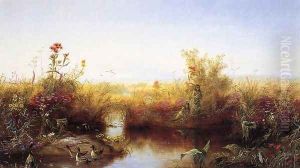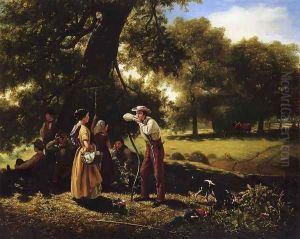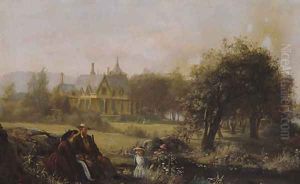Jerome B. Thompson Paintings
Jerome B. Thompson was an American artist known for his landscape and genre paintings. Born in 1814 in Middlebury, Vermont, Thompson developed an interest in art at a young age. Despite the lack of formal art education in his early years, he pursued his passion for painting and eventually moved to New York City, which was becoming a center for artists in the United States.
In New York, Thompson worked on improving his technique and began exhibiting his work. He became associated with the Hudson River School, a group of artists known for their romantic and often dramatic depictions of the American landscape. Thompson's works, however, often incorporated elements of genre painting, which involved scenes of everyday life. His landscapes frequently included figures and narratives that gave viewers a glimpse into the lives of ordinary people of his time.
Throughout his career, Thompson enjoyed considerable success. His paintings were exhibited at prestigious institutions such as the National Academy of Design and the Boston Athenaeum. His work was well received by both critics and the public, and he was considered a talented painter who contributed significantly to American art during the 19th century.
Despite his achievements, Thompson is not as widely remembered as some of his contemporaries from the Hudson River School. Nevertheless, his paintings continue to be appreciated for their beauty and historical value, offering insight into the American spirit and landscape during his lifetime.
Thompson passed away in 1886, leaving behind a legacy that, while somewhat overshadowed by more famous peers, remains an important part of the tapestry of American art history. His works today can be found in various art museums and private collections, where they continue to be studied and admired for their contribution to the genre of landscape and genre painting in American art.
